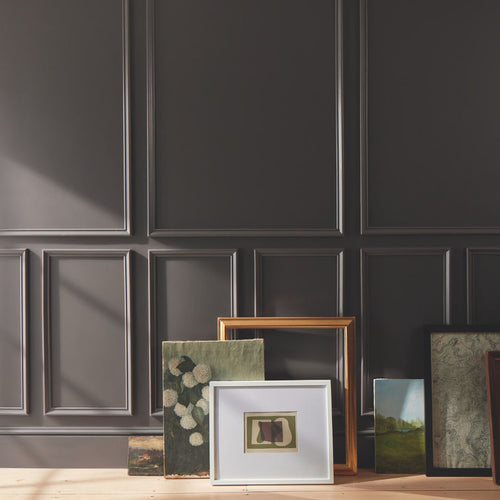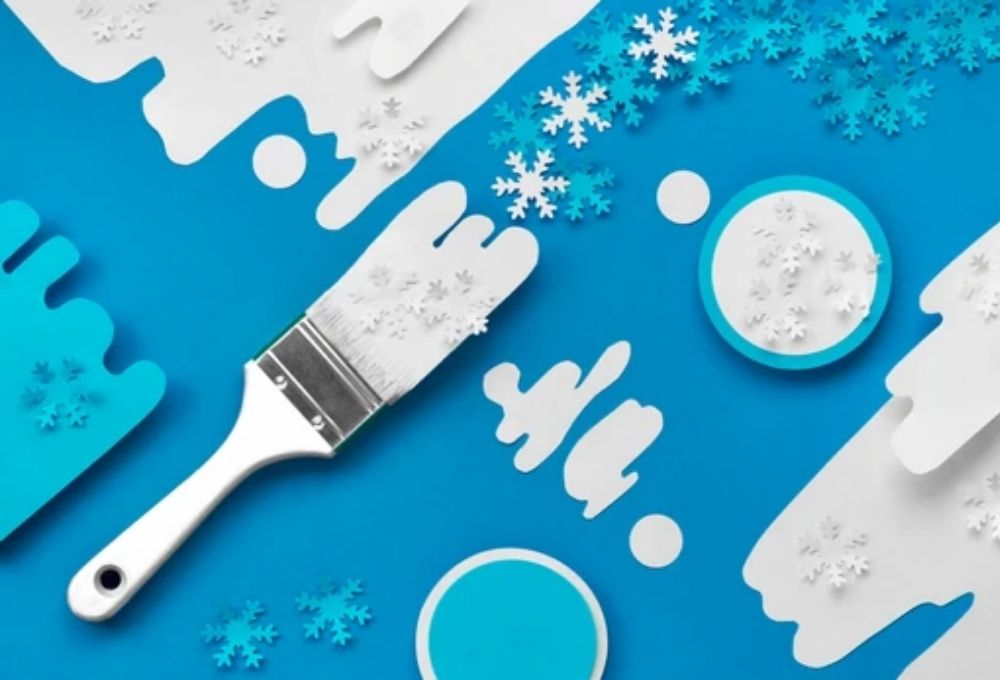
Most homeowners, paint professionals, and remodelers try to get all of their painting projects finished within the warmer months. The weather conditions allow for much more effective results, both indoors and outdoors. However, the timing is not always right and we may get sidetracked by other priorities. While paint reacts differently in cold temperatures compared to how it performs in warm temperatures, winter days can still provide numerous opportunities to get the job done. It is important to have the right supplies and to use the right technique when taking on this challenge. Even if the circumstances are not quite optimal, here are a few cold weather painting tips to help ensure your paint project is a success.
Determine if it’s Too Cold to Paint
Most paint brands have labels that warn users not to paint in temperatures below 35 degrees Fahrenheit. Thanks to modern advancements in paint materials, most paint manufacturers now offer acrylic latex paints that can be applied to the exterior of your home in temperatures as low as the threshold of 35 degrees. At Ricciardi Brothers, we offer a formula that is specifically designed to extend the paint season for you. Painters should make an effort to paint in consistent temperatures in order to ensure an even application.
Choose the Right Paint For the Conditions
A paint that is designed for lower curing temperatures will naturally perform better and will be more reliable than standard paint mixed with additives. Note that the temperature must be at or above the minimum recommended temperature for the entire process, not just for the application. Along with choosing the right paints, the brushes you choose can make or break your project. Since paint thickens in colder weather, consider using brushes made with nylon, polyester, or Chinex bristles.
Allow For Sufficient Drying Time
Be sure to schedule your exterior paint project when you have ample time to allow each coat to dry. Plan in advance to ensure a seamless application throughout the entire process. You may need to allow the first coat to dry for up to a day before the second coat can be applied.
Is Previously Frozen Paint Usable?
There is a possibility that water-based paints that have gone through several freeze-thaw cycles may still be usable. However, this is not always the case. Unfortunately, If the previously frozen paint has lumps in it and will not mix to a smooth consistency, it is no longer usable. Water-based paint freezes at 32 degrees Fahrenheit, while oil-based paint can withstand lower temperatures.
Be Aware of Surface Temperatures
The minimum temperature that your paint can be applied in can not only relate to the air, but the temperature of the surface being painted as well. For example, if the air temperature is around 50 degrees F, but the banister you are painting is only 40 degrees F, it is as if you’re painting in 40-degree F weather. Paint professionals will generally use infrared thermometers to avoid guessing whether or not the conditions are permitting. These tools can be relatively inexpensive and are worth the investment in substantial projects for your home.
Track the Weather and Sunlight
Before beginning your project, check the weather forecast for the upcoming week so that you can plan accordingly. Find a stretch of a few days when temperatures will be their highest and the sun will be out. Aside from temperature, drying times will depend on humidity, sunlight, and other environmental factors. Keep in mind that direct sunlight quickly raises the surface temperature of most building materials. This is preferred in the colder seasons, so aim for direct sunlight while painting.
Paint Your Home With Ricciardi Brothers
Throughout the years, homeowners have been coming to Ricciardi Brothers family-owned stores for decades where we provide the paint, advice, and various services that allow people to do more with their homes and commercial establishments. We have all of the supplies you will need to complete a successful paint project, including the most effective exterior paints on the market. Please visit one of our locations in your neighborhood or contact us today for more information.
Ricciardi Brothers
Ricciardi Brothers has helped creatively transform tens of thousands of homes and businesses for over 85 years. Our 40+ locations across New Jersey, Pennsylvania, and Delaware specialize in painting and expert
design services with first class customer care.
Contact us for inquiries on how we can fulfill your design needs!
























